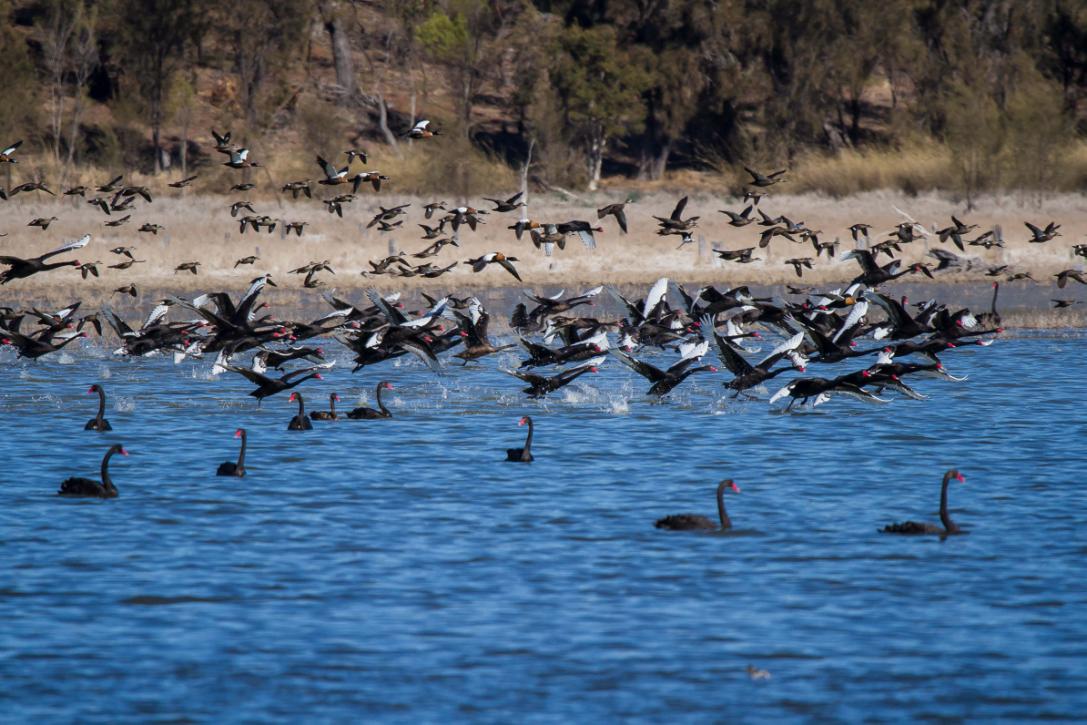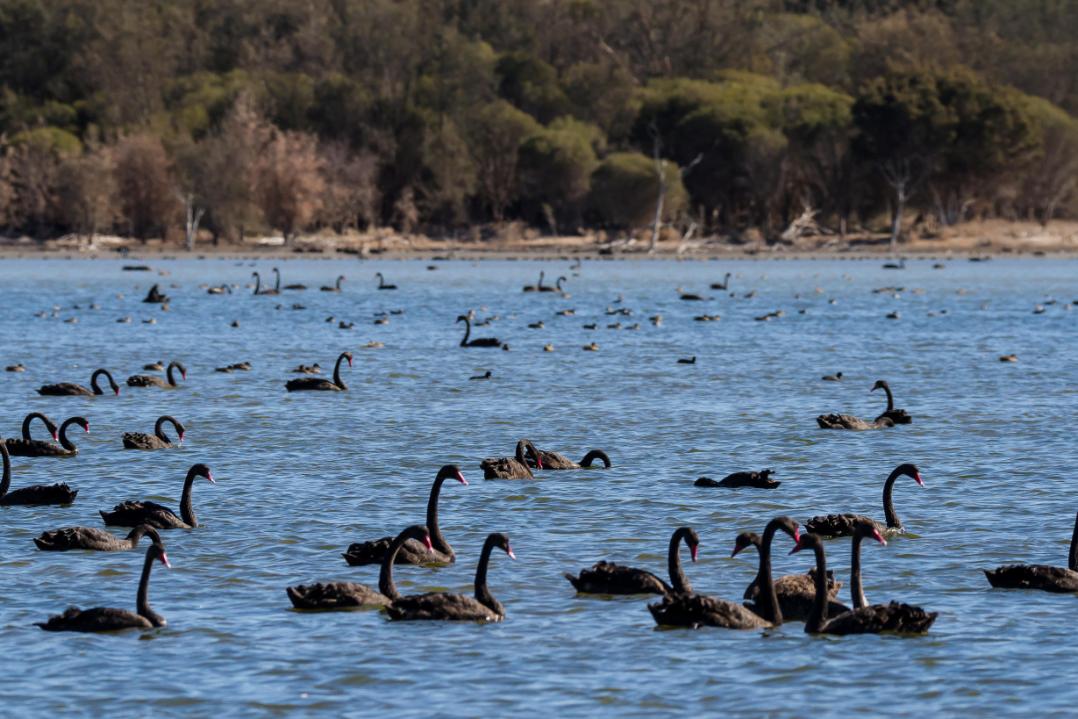Kwinana Rockingham Mandurah Branch
A resident of Wagin, Jean McGregor, whose property backs onto Wagin Lake, contacted KRMB to see if we would be interested in visiting Wagin Lake while we were down at Dryandra. Jean was eager to gain greater recognition for the lake and support for local community approaches to local government and DBCA for more protection for Wagin Lake. The lake was said to currently have large numbers of Black Swans and other waterbirds.

Swans and ducks taking flight from Wagin Lake, C Prickett
Consequently, Chris Punter, Colin Prickett, Geoff and Rosalie Barritt drove down to Wagin on the way home from Dryandra Woodlands. We were unable to confirm a meeting with Jean, so we did not catch up with her. However, we did find Wagin Lake and it still had a good water level and significant numbers of waterbirds. A rough count established that there were around 1,000 Black Swans on the lake, together with around 500 Grey Teal, large numbers of Pacific Black Ducks as well as Eurasian Coots, Hoary-headed Grebes, Pied (formerly Black-winged) Stilts, White-faced Herons, Great Egrets and Yellow-billed Spoonbills. Many of the Black Swans still had juvenile plumage but it is not known whether their parents nested at the lake. The presence of the Hoary-headed Grebes and Eurasian Coots, two species that dive to the bottom of the lake to feed, suggest that the water is still quite deep in the centre of the lake. There appeared to be a significant number of birds resting up on the southern shore of the lake. This was confirmed when they were spooked by something (we did not see any raptors or other cause) and took flight out into the centre of the lake. Despite the lake having such numbers and diversity of waterbirds there is no signage or infrastructure for visitors. In fact it is difficult to even see the lake from the road. We were able to park off the road on a track that appeared to be used by local 4WD enthusiasts eager to practice their skills on a steep climb a short way in.

Swans, Teal & Grebe on Wagin Lake, C Prickett
It was evident to us that this lake must be an extremely productive habitat if it is supporting such numbers of waterbirds.
Following our visit I was contacted by Graham Harvey, a friend of Jean’s. He told me that in the past the lake would dry out over summer and was then used as a playground for off road vehicle users (dirt bikes and 4WDs). However, the flooding rainfall event of February 2017 filled the lake and the wet winter of that year has meant that it has not dried out since. Graham told me that the next lake, 3km further down the road, currently supports only a handful of Black Swans so he believed that there must be something special about Wagin Lake that attracts and maintains such a large population. A group from the local community is keen to see a car park, signage and other infrastructure (e.g. a bird-hide) installed to cater for visitors. They would also like to see a greater level of protection for the lake, especially when it dries out.
Jean later reiterated what Graham had told me. I was interested to learn what birds used the lake as water levels receded during normal summer). However, Jean did not have any such historical knowledge, having only recently taken an interest in the lake. I would recommend any Club members that are in the Wagin area make a visit to the lake if they are interested in waterbirds. The region has received good rainfall out of the recent frontal systems so the lake should maintain its good water level for some time.
Colin Prickett

